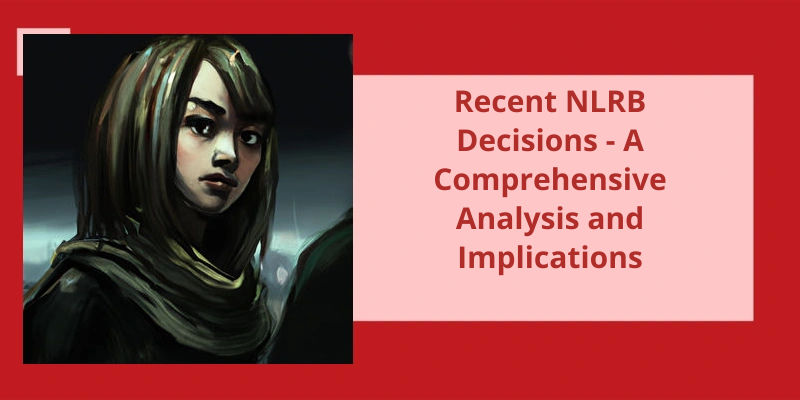As the National Labor Relations Board's decisions continue to shape the landscape of labor relations in the United States, it’s important to take a closer look at the recent developments and rulings handed down by the board. From the classification of workers as employees or independent contractors to the protection of workers' rights to engage in protected concerted activity, these decisions have a significant impact on both employers and employees. With a renewed focus on protecting workers' rights and ensuring fair labor practices, the NLRB's recent decisions offer important insights into the evolving nature of labor law in the United States.
What Is the NLRB Decision Process?
Once an election agreement is reached, the NLRB agents will schedule the election, typically within 42 days from the filing of the election petition. During this time, the agents will also conduct a pre-election hearing to resolve any disputes between the parties, review the appropriateness of the bargaining unit, and determine the eligibility of voters.
On the day of the election, eligible voters will cast their ballots in person or by mail. The ballots are collected and tallied by the NLRB agents, and the results are typically announced within a few days of the election. If the union wins the election, it becomes the legal representative of the bargaining unit and is entitled to negotiate on behalf of the employees. If it loses, it may file objections to the conduct of the election or challenge the eligibility of voters.
In addition to conducting elections, the NLRB also has the authority to investigate and remedy unfair labor practices. This includes allegations of employer interference with employee organizing efforts, discrimination against union members, and refusal to bargain in good faith. The process for addressing unfair labor practices typically involves a formal complaint, a hearing before an administrative law judge, and a decision by the NLRB Board.
The NLRB decision-making process is guided by the National Labor Relations Act, which sets forth the rights and obligations of employers, employees, and unions in the private sector. The Act also grants the NLRB broad powers to enforce it’s provisions, including the ability to issue injunctions, order reinstatement of employees, and award back pay.
The process is often complex and involves multiple stages, but it’s ultimately intended to create a fair and equitable workplace for all parties involved.
The Role of the NLRB in Promoting Collective Bargaining and Labor Rights
- The National Labor Relations Board (NLRB) is an independent agency that plays a crucial role in promoting collective bargaining and protecting the rights of workers.
- The NLRB is responsible for enforcing the National Labor Relations Act, which guarantees workers the right to form or join a union, engage in collective bargaining, and engage in other protected concerted activities.
- One of the NLRB’s primary functions is to investigate and remedy unfair labor practices, such as discrimination, retaliation, and interference with workers’ rights to form or join a union.
- The NLRB also has the authority to conduct elections to determine if workers want to be represented by a union, and to certify unions as the exclusive bargaining representative of workers in a particular workplace.
- Additionally, the NLRB is responsible for interpreting and developing labor law through it’s decisions, which can have a significant impact on the rights of workers and the power of unions.
Conclusion
These decisions have ranged from key rulings on employee classification to the rights of union organizers. While some have praised the NLRB's efforts to strengthen workers' rights, others have criticized the Board for what they see as overreach and an unbalanced approach to labor issues. Regardless of one's stance, it’s clear that these decisions will continue to have a significant impact on American labor relations for the foreseeable future, and that the NLRB's actions will be closely watched and debated by stakeholders on all sides. As we move forward, it’s crucial to continue these discussions and ensure that workers' voices are heard and protected in the ever-changing landscape of the American workplace.






